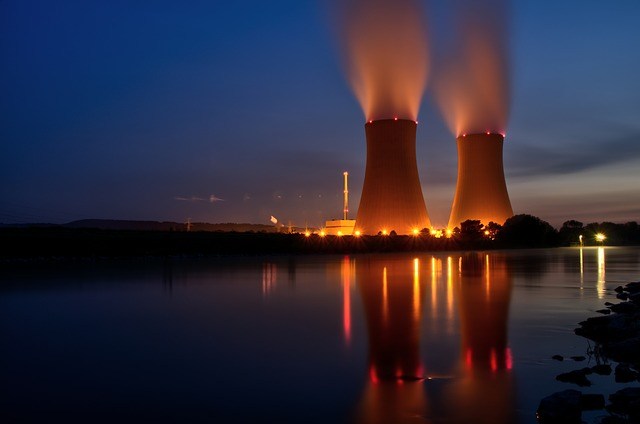As many troubled relationships are, the one between the European Union and nuclear energy is hard to break. However, whatever the most difficult thing to do is more often than not the right thing to do.
According to Eurostat figures, 14 EU countries had operational nuclear reactors in 2017 and nuclear plants generated around 25% of the electricity produced in the EU in the same year.
Around one-fourth of the electricity we produce comes from the atom, which means that the time to talk about the future of nuclear energy is still ongoing.
Nuclear energy is often addressed as a tool for tackling climate change since it is able to produce energy with low CO2 emissions, reaching the amount of 0 during the production phase.
However, according to the World Nuclear Industry Status Report of 2019, we observe a fall of renewable energy sources’ total cost compared to coal and combined gas cycle power generation respectively of 88% for solar and 69% for wind power. At the same time, nuclear energy sees its costs increasing by 23%. Furthermore, nowadays investors tend to privilege renewables and invested in wind power ($134 billion) and in solar ($139 billion), while nuclear energy attracted only $33 billion.
This information depicts a scenario in which nuclear energy attracts less investments from the private sector and the reasons are likely to be the fact that nuclear power is technologically and financially more demanding than its alternatives and its implementation on a great scale is slower.
The risk of additional costs due to delays, as in the case of Hinkley Point C, Flamanville and Oikiluoto, is another fundamental reason for lack of trust in nuclear energy as a valuable option for cleaning the energy mix.
These delays are notably not only a risk for investors but, on the other hand, also for citizens, since the greater the time lag is the greater the amount of background emissions associated to nuclear power are, since the operations to build the powerplants are themselves polluting but no significant emissions’ reduction is taking place during the delayed construction.
The effects of these economic trends are observed in European Union’s energy mix, whose additional capacity in 2018 was almost entirely made by renewables, more precisely 371 terawatt-hours added by wind power and 128 terawatt-hours from solar power compared to 1997.
On a practical level, the EU is already reshaping its energy mix by privileging renewable energy sources over nuclear and it should be expected that decisions taken at the highest institutional level are coherent with this overall tendency. However, things are more complex.
From the last signals that the European institutions sent us, it seems that nuclear energy still has a place in our strategy to achieve sustainable energy production: the most relevant one is the decision of EU ministers to include nuclear projects in a sustainable finance classification scheme that will make them eligible for green investment.
Around €180 billion euros per year of additional investments are at stake and, in order to be selected, the Commission proposed in May a system to decide which projects should be included and the Council had the role to establish 6 objectives to define the eligible projects: climate change mitigation; climate change adaptation; sustainable use and protection of water and marine resources; transition to a circular economy, including waste prevention and recycling; pollution prevention and control; prevention and restoration of biodiversity and ecosystems.
To be accepted as sustainable financing, projects must contribute “substantively” to at least one of these six goals without harming any of the others. These criteria do not exclude nuclear capacity from the eligible projects as demanded by Germany, Austria and Luxembourg, who explicitly called for this requirement to be part of the framework, and for this reason, the division among the Member States became visible.
This episode clearly shows how the interests of countries as France, the main nuclear player in Europe, and Eastern European countries that are dependent on coal and plan to increase their nuclear capacity – two reactors with total net capacity of 2.4 gigawatts in Hungary by 2026, two new reactors of 1,200 megawatts each in Czech Republic, two small reactors for a total capacity of 900 megawatts, a three gigawatt nuclear power plant planned to be built in Poland by 2029 and another 3 gigawatt by the 2030s and a replacement plan for the 1200 megawatt Bohunice reactor in Slovakia – are keeping the atom in our energy strategy despite efforts of institutions as the European Parliament to exclude it from green investments.
Politics, rather than the economy, is keeping the relationship between nuclear energy and the EU in place and the main risk coming from this situation is that a considerable amount of resources could be driven to the most expensive and inefficient solution and, consequently, slow down the whole transition.
The EU definitely needs a discussion on nuclear energy that is able to look at what findings tell us instead of being rooted in fear and irrationality, particularly because this negative perspective helps those who advocate for an ultimately not effective choice to depict any opposition to their viewpoint as “moved by fear” of nuclear energy rather than on solid evidences.
Our relationship with nuclear energy has to change and, eventually, to end.
Riccardo Antonucci


